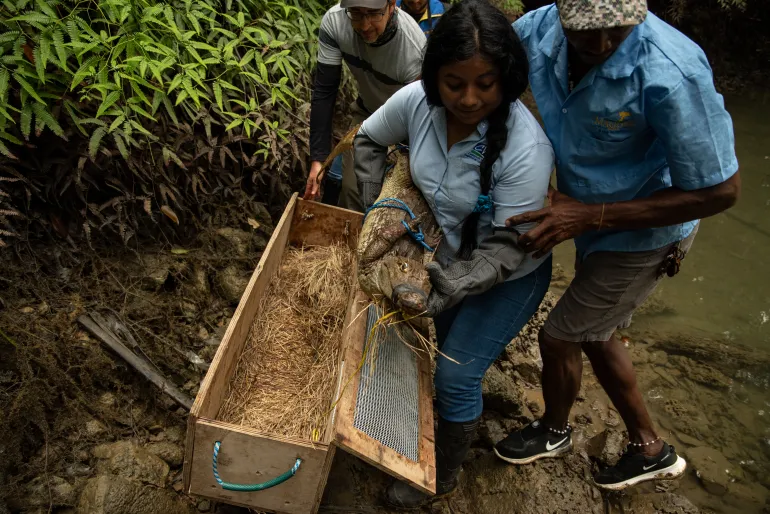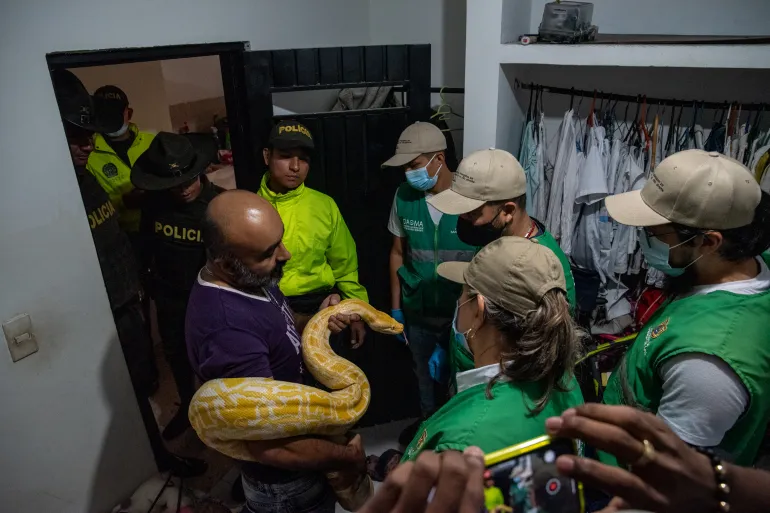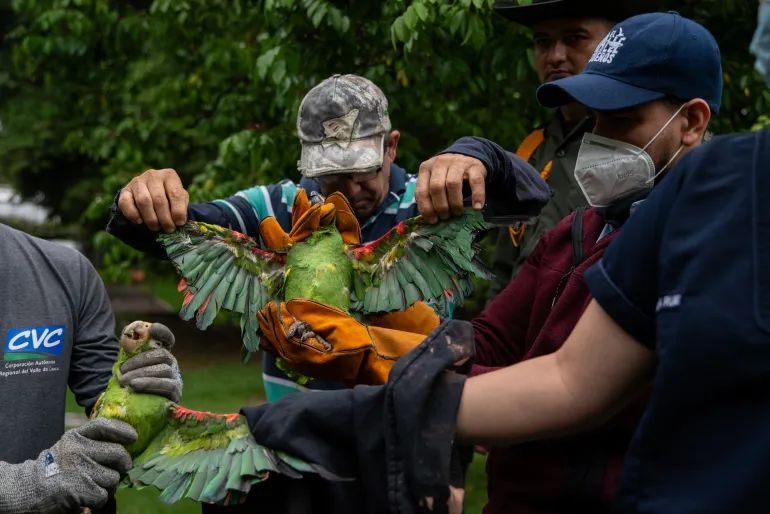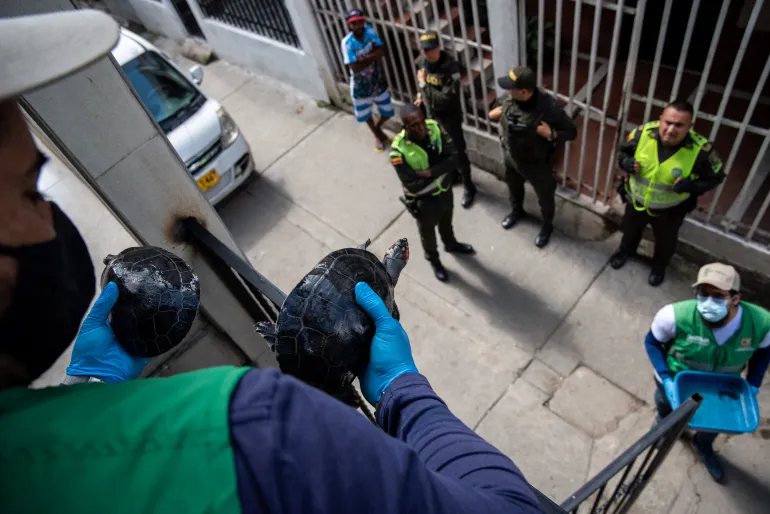Between Narcos and Nature: Colombia’s Battle Against Wildlife Trafficking
In the shadow of drug cartels and the violent images often associated with Colombia, a quieter yet equally sinister trade thrives—wildlife trafficking. The story often untold, emerges from the lush landscapes and biodiversity of Colombia, painting a picture not of narcotics but of natural treasures being plundered at alarming rates.
On a brisk morning in January 2023, the tranquil city of Cali became the frontline of this battle. A specialized task force, distinct from drug interdiction units, orchestrated a raid on a nondescript house. Their mission was to recover illicit treasures, not of gold or drugs, but living jewels—a massive yellow-spotted python and two vulnerable taricaya turtles, hidden away as part of a booming black market.
The operation highlighted the workings of a unique police unit, one that diverges from the typical narratives of Colombia’s law enforcement. Created four years ago, this unit is an emblem of a shifting focus within Colombian policy, from the war against drugs to a battle for biodiversity.

The War on Nature’s Plunderers
Colombia’s biological wealth is staggering; it is one of the most biodiverse countries globally. However, this richness also marks it as a hotspot for wildlife trafficking, a lucrative criminal enterprise generating an estimated $23 billion annually. Silvia Vejarano, a biologist with the World Wildlife Fund, notes the dire consequences: “Removing even a few individuals of an endemic species could drive it to extinction, and even non-endemic species play crucial roles in maintaining ecological balances.”
In response, Colombia has trained around 100 officers specializing in wildlife crimes. These officers navigate the complex web of illicit trade that, much like drug trafficking, utilizes sophisticated networks and often overlaps with the routes and methods of narcotic smugglers. Despite the commonalities, wildlife traffickers typically attract less attention, exploiting the shadow cast by drug wars to move their goods from remote areas to urban centers, often ending up in international markets.

Online Markets and Undercover Operations
The digital age has transformed wildlife trafficking. Once an overt activity along roadsides and local markets, it has now receded into the depths of the internet. Traffickers use social media platforms like Facebook, WhatsApp, and Instagram to reach a global clientele. Catalina Ocampo-Carvajal, a biologist and advocate, illustrates this shift, explaining how exotic animals are now just a mouse click away from being sold. The allure of these animals often stems from their status symbol, adding a layer of social prestige for their owners.
To combat this, law enforcement officials have adopted undercover tactics similar to those used in narcotics stings. By posing as potential buyers, they infiltrate trafficking networks, a strategy that led to the significant raid in January.

In 2021, Colombian legislation set stern penalties for wildlife trafficking, ranging from five to over eleven years in prison. Yet, enforcement and judicial outcomes often tell a different story, with many suspects released pending trial and few facing substantial sentences. Meanwhile, the animals suffer immensely, with an estimated 50 to 80 percent perishing during transit due to harsh conditions.
Despite the grim statistics, there are glimmers of hope. The python and turtles rescued in Cali represent small victories. The python now resides in a zoo, likely destined to spend its life in captivity—a bittersweet outcome, but a life spared. The turtles, however, were returned to their natural habitat, a significant win for conservation efforts.
As Cristian Mesa, head of the environmental crimes unit, puts it, “Every animal has a role in nature.” This sentiment drives their mission, reflecting a broader commitment to not just enforcing the law but fostering a deeper respect and understanding of Colombia’s natural heritage.
Colombia’s pivot to prioritizing biodiversity over mere drug enforcement is a notable shift in a country plagued by environmental challenges. It is a testament to a growing recognition that preserving ecological wealth is as crucial as curbing narcotics trafficking, not just for Colombia but for the world. The stakes are high, and the outcomes of this battle are uncertain, but the dedication of Colombia’s wildlife investigators offers a hopeful glimpse into a future where natural treasures are valued and protected.

